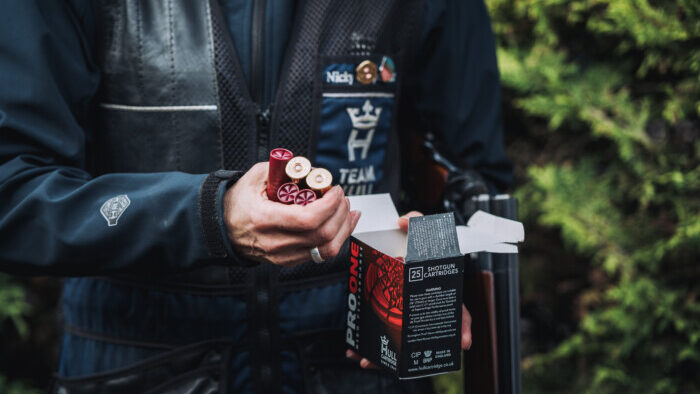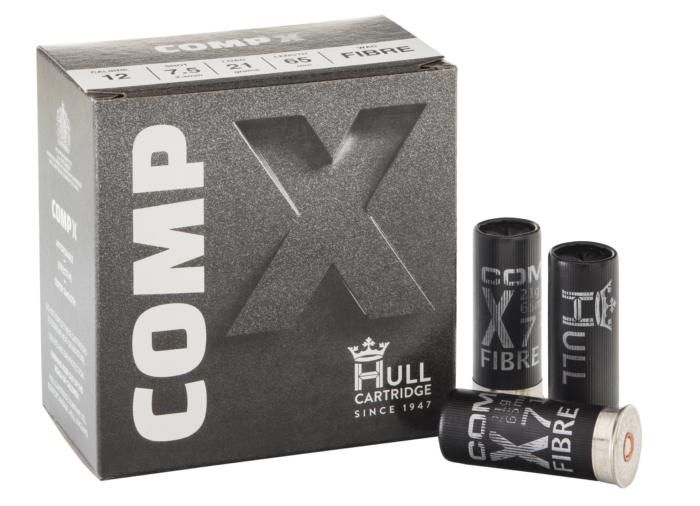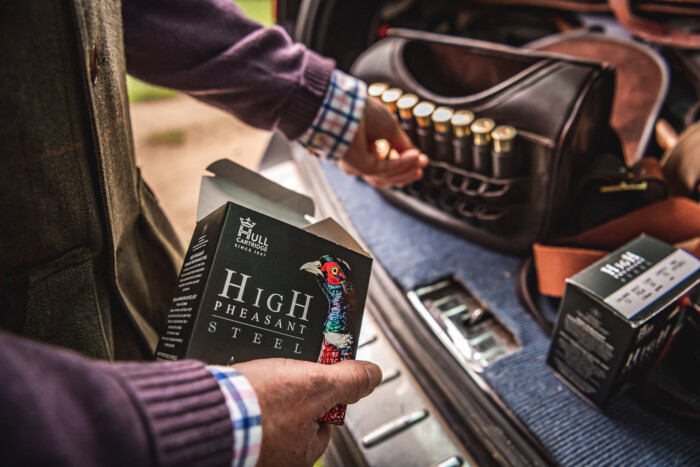If you are just getting into shotguns, whether it is clay or game it can all be a bit overwhelming. With so many options of shotgun cartridges out there and the choice of shot size, load wad where do you start?
In this blog, I’m going to look at the clay range from Hull Cartridge in particular. I will also explain what all the numbers mean and how you should use them.
Shotgun Cartridges – Let’s learn the lingo
Before we get into looking at the rounds Hull Cartridge produced, it’s important we understand the terms, what they mean and how it affects you. Below I go through the common phrases surrounding shotgun cartridges.
Gauge
The Gauge or ‘bore’ of a shotgun is a measurement of the barrel. It refers to how many lead balls, of equal diameter to the barrel, would equal 1 pound in weight. So 12 Gauge, would mean 12 lead balls with a diameter of 18.5mm would be 1lb in weight. This also means the smaller the number the larger the cartridge. So a 10G is larger than a 12G, a 12G is larger than a 20G and so on.
Wad
A wad is a small, but key component in any shotgun cartridge. The main purpose of the wad is to seal the expanding gases created by the burning of the powder. This prevents the gas from getting past and causing issues such as irregular patterning whilst also propelling the shot. Traditionally plastic wads were used however, in recent years other materials have become popular such as fibre. Fibre is better for the environment as it breaks down quicker than plastic and is now mandatory on a large amount of shooting grounds.

Shot Load
Shot load is a common phrase when discussing cartridges and is a factor you must consider. When it comes to shotgun cartridges, ‘shot load’ refers to the total weight of the pellets in the cartridge. For example, a cartridge with a 28g shot load means it has 28g of pellets in the shot. Although there are many variations out there the key ones for clay are 21g – 28g. One thing to note is that a higher load will contain more pellets whilst a lighter load contains fewer.
Shot Size
The next factor to consider when picking your clay cartridge is the shot size. The term ‘shot size’ refers to the diameter of the pellets in the shot. The thing that catches most beginners out is that shot sizes work opposite to what you would expect. The larger the number, the smaller the pellet diameter, and the smaller the number, the larger the pellet diameter. The smaller shotgun cartridges will also contain more pellets. Let’s look at the hull cartridge pro fibre for example. The 28g 7.5 shot will contain around 394 pellets whilst the 28g 8 shot will contain 448. Obviously, the smaller balls weigh less so to make the shot load the same, you have to put more pellets in.
Chamber Size
Chamber size is another factor you must consider when selecting your shotgun cartridge. Every shotgun will have a different chamber size, but the most modern guns will be either 2 3/4″ (70mm) or 3″ (75mm). It is important you use the right size cartridge for the chamber of your shotgun. Although a 3″ cartridge would fit in a 2 3/4″ chamber it is not safe as the shotgun has not been tested to withstand the pressure it may produce. Also remember the chamber size refers to the cartridge length after it’s been shot, not before.
Shot material
So, we now know the ‘shot’ refers to the pellets inside the cartridge. The next thing to look at is the material these are made of. The most common material used is lead. It’s cheap, flys well and hits hard making it great for Clay or Game shooting. However, once again we find ourselves in a predicament. Lead is extremely toxic and therefore bad for the environment and the creatures within it. Over the years we have seen minor changes such as the banning of lead shots for waterfowl in 1999. The biggest change came in February 2020, when BASC released a joint statement with several rural organisations calling for the manufacturing of lead cartridges to stop within a 5-year time scale. There are alternatives already out there like Bismuth and steel but the issue with these include the cost, and the flight patterns.
Let’s look at Hulls Shotgun Cartridges
Hull cartridge has a rich, family history and is arguably the most popular shotgun cartridge in the UK. Their founder, Sydney Bontoft, started his company in 1924 selling carbide to the industry and to farms. Eventually, he started selling cartridges and as the demand grew, in 1947 Hull cartridge was born.
Although there are around 20 cartridges in Hull’s clay range, I will be looking at a small selection from entry-level, to mid-range and finally their top-end cartridges.
The ideal clay round for beginners
To start us off we have Hull Cartridge Comp X. This entry-level cartridge is designed with beginners in mind. The cartridge offers very low recoil due to its lower speed. When I first started shooting, this cartridge was the first one I use. The low recoil allowed me to spend more time focusing on my lead, and less time worrying about the kick. I would recommend this cartridge for anyone using a shotgun for the first time as it offers a way to ease into clay shooting. The other great thing about Comp X is that it doesn’t break the bank. Coming in as little as £63.99 a slab, or £0.26 a cartridge, it doesn’t matter that much if you miss.

I also use these occasionally when I go on simulated game days. These days are great fun however you can easily go through 300 cartridges or more so a cost-effective option like the comp X is always welcome. The Comp X are available in 21g or 28g shot loads and a 7.5 or 9 in shot size. They also come with the choice of plastic or fibre wad.
The one downside I would like to mention about the comp X is the velocity. Most clay shooters will use a 28g load with a 7.5 shot size for general sporting. I am going to use the fibre wad for this example as most clubs and grounds in Norfolk no longer allow plastic. At 30M the pellets are travelling at around 212m/s. Now although that sounds fast when you compare it to some of the other cartridges in Hull’s range which will do 230’s + it’s rather slow. However, if you can learn to lead a little bit more then this is a great cartridge.
Fast & furious
Next, I am going to look at the Hull Cartridge Superfast. Now, these shotgun cartridges I used after Comp X, and although I took a break from now have now started to use them again. As the name would indicate the superfast is one of the fastest clay rounds Hull have to offer. They come in plastic or fibre wad, are 27g loads and 7.5 shot. Now the 1g you lose in the load you make up for in speed. Each cartridge still contains around 356 pellets and is an impressive 230m/s at 30 yards. Coming in at £78 a slab there is a noticeable price difference between this and a budget cartridge such as the Comp X however, I feel it is worth it. The downside to this cartridge is the recoil. A faster cartridge will kick more, and believe me after shooting 100 clays you will feel it.
The other downside to these cartridges is the lack of variation. They only come in a 27G 7.5 shot. Now although this is ideal for most clay shooters doing general sporting, it does not favour those doing a more specialized discipline such as DTL or Skeet.
The best sporting cartridge around?
I couldn’t, not speak about the sporting 100 from Hull cartridge. What is there not to like? Reasonable price, Resonable speed, modest recoil and developed by one of the biggest names in clay shooting. Now I am currently using the sporting 100 and must say I love them. The patterning these cartridges produce, even at the longer ranges, is exceptional. The recoil is between the Comp X and the superfast making them a great choice for clay days. They are a little slower than the superfast coming in at 217m/s at 30 yards but with the right choke and a good swing, this can easily be countered.
The Sporting 100 come in a 28g load, with a choice of either 7.5 or 8 shot. The 7.5 have an average pellet count of 394 whilst the 8’s sit higher at 448. I would also like to point out all of these features come with an attractive price tag of just £72 per slab or £0.29 per cartridge. Another thing I must say with the hull is that their cartridges are very clean. Compared to some other brands I have shot, generally, they leave hardly any deposit.
The performance cartridges.
We are now looking at Hull Cartridges’ high-end range. For this, I wanted to pick a cartridge that is affordable, yet offers more than the budget cartridges. This is why I have chosen Pro Fibre by Hull Cartridge. They are Eco-friendly, offer dense patterns, and offer a wide choice of Shot.
The Hull Cartridge Pro-Fibre come in a 24g or a 28g load, and offer a shot size of 7.5 or 8, making them an ideal competition load. The fibre wad and the card obturator are both biodegradable making them a great cartridge, for those worried about the environment. The pellet count on these is the same as the sporting 100, with the 28g 7.5 having an average count of 394 whilst the 28g 8 shot had a pellet count of 448. I think where these cartridges take the advantage over the sporting 100 is the fact they are cleaner, faster and eco-friendly. The 28g Load has a velocity of 220m/s. The higher pellet count and decent speed, paired with the right choke, make these great for a variety of disciplines from skeet to general sporting.
My Conclusion
All in all, you can’t go wrong with Hull Cartridge. To a degree, the performance will mostly be down to the shooter however, having the right cartridge will make a big difference. Your best bet is to buy a slab, get down to your local club and see how you get on. I will always stick with the Hull cartridge range as I don’t believe there is a better value cartridge out there.
If you are going out shooting don’t forget your accessories which can be found here. We also deliver Shotgun cartridges and Shotguns to your door every week. For more on our delivery system please click here. If you would like to learn more about hull cartridges’ range click here.

